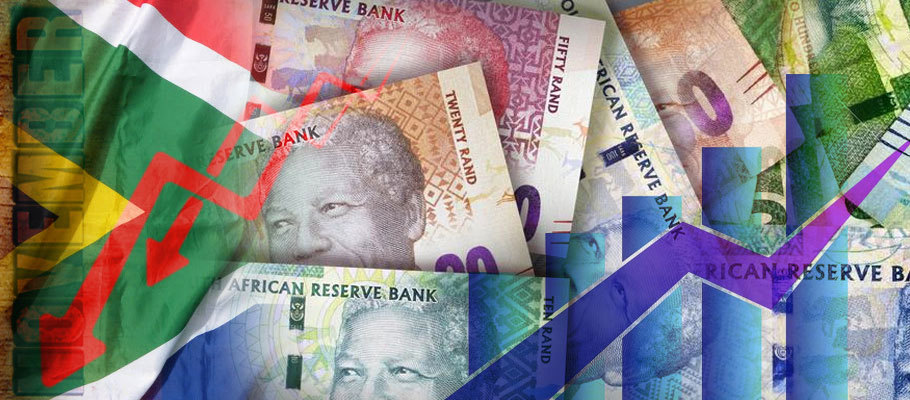
Published: December 8th, 2021
The South African rand began this week’s session as a surprise outperformer but could face renewed headwinds as traders consider the potential economic fallout from the newest strain of COVID-19.
ZAR reversed declines seen in November against sterling and the greenback, rebounding substantially for a strong entry into the new week that saw it reach outperformer status amongst both developed and emerging market fiats.
Rand received another lift on Monday from a Bloomberg report suggesting that European officials might reconsider their hastily imposed travel restrictions on travel to southern Africa at a meeting scheduled for Tuesday 7th Dec.
While no policy change was reported at the time of writing, an additional tailwind arrived in the form of a decision from the Chinese government to cut the reserve requirement ratio for commercial banks by an amount equivalent to 0.5 per cent of regulatory capital. The move drove appreciation in several risk assets and was widely seen as an effort by Beijing to reignite the world’s second-largest economy after a period of sluggish growth.
Economists at UOB Bank in Singapore said in a note to investors that Beijing’s announcement came ‘earlier than expected,’ and fast in the heels of Premier Li Keqiang’s meeting with the IMF the previous week (wc 29th Nov). In a post-meeting press conference, he hinted at a cut to reserve requirements but didn’t specify the timing.
The cumulative impact of those events helped pull USD/ZAR back below the 15.0 level and also weighed on the GBP/ZAR rate, which dipped briefly beneath 20.00 in Monday’s session. Those gains represented a reversal of losses suffered when western countries rapidly cracked down on travel to and from South Africa after the omicron coronavirus strain began spreading in the country.
Barclays Emerging Markets FX Strategy Unit told Reuters that South Africa ‘is the epicentre of mmicron concerns, with numbers of new cases rising daily.’ Barclays added that there was some optimism to be drawn from the fact that new deaths and hospitalisations have so far remained stable.
The elevated uncertainty, however, will likely hinder further ZAR appreciation.
Despite most western countries seeing the new virus strain begin to pop up across their populations, travel restrictions to some parts of Africa have been widely imposed.
Travel bans could cause significant economic hardship to the countries concerned and act as a constraint on any further rand gains over the coming weeks and months. Colder weather in the global north would usually drive an influx of tourists to South Africa from December through March, with ZAR benefitting from heightened demand.
In a note to clients on Monday, Investec said ZAR’s exchange rate against major currencies typically strengthens from the end of November to the early part of March thanks to rand purchases by foreign tourists. South Africa’s GDP also gets a lift from the travel, retail, hospitality, and tourism industries.
‘Travel restrictions make it much less likely that ZAR can make substantial gains into year end’.
Scientists are still getting to grips with the new variant. However, it’s thought to spread much more rapidly than earlier versions. America’s chief medical adviser Anthony Fauci told the press on Tuesday that there ‘doesn’t appear to be a great deal of severity in terms of its physiological effects.
If clinical studies show that the new variant is a mild one, that could give a jolt to South Africa’s economy, with potential knock-on effects for the rand. However, the current round of studies could take weeks to deliver a firm verdict.
Ken Silverman, a fixed income and currency analyst at Rand Merchant Bank, told Bloomberg that Wednesday’s South African GDP figures and Thursday’s current account release would impact rand valuations. Still, he expects domestic news to be overshadowed by the US CPI numbers on Friday.’
Any good news in Wednesday’s third-quarter South African GDP data could be overshadowed by any signs of renewed greenback strength after this Friday’s release of November US inflation data.
Silverman said that GDP is expected to show a 0.7 per cent quarter-over-quarter contraction thanks to covid’s latest wave. ‘South Africa’s current account should remain in surplus’, he added, ‘although we think it will narrow to 3.7 per cent of GDP from the 5.5per cent recorded in the second quarter.
That analysis comes after October’s figures showed a further rise in price pressures, which raised the US CPI to the highest level seen since 1991. Surging inflation is thought to be behind Fed Chairman Jerome Powell's, along with other members of the bank’s FOMC monetary policy committee, recent change of heart on accelerating the pace of tapering for the central bank’s hefty quantitative easing programme.
That process of reducing bond purchases had been scheduled for around the middle of 2022. However, many Fed watchers now expect the bank to say it will now look to complete the process by next March.
Numerous factors have driven the rand’s price moves in Autumn, including the mid-November announcement on rates by the South African Reserve Bank (SARB), market response to statements from the US Federal Reserve’s FOMC as well as coronavirus-related travel limits, mainly by European countries.
Analysts said ZAR was taking a hit despite the SARB’s decision to lift its key rate by 25 basis points, a move that was entirely in sync with market expectations.
Upside from the SARB decision to lift its benchmark interest rate to 3.75 per cent was, however, dimmed somewhat by the Turkish lira’s precipitous plunge, which saw it sink to new all-time lows when the Central Bank of the Republic of Turkey cut its interest rate for the third time in three months.
The broad strength of the US dollar has also been a driver, alongside the rand’s correlation with other emerging market currencies and the impact of central bank policy, both in South Africa and America.